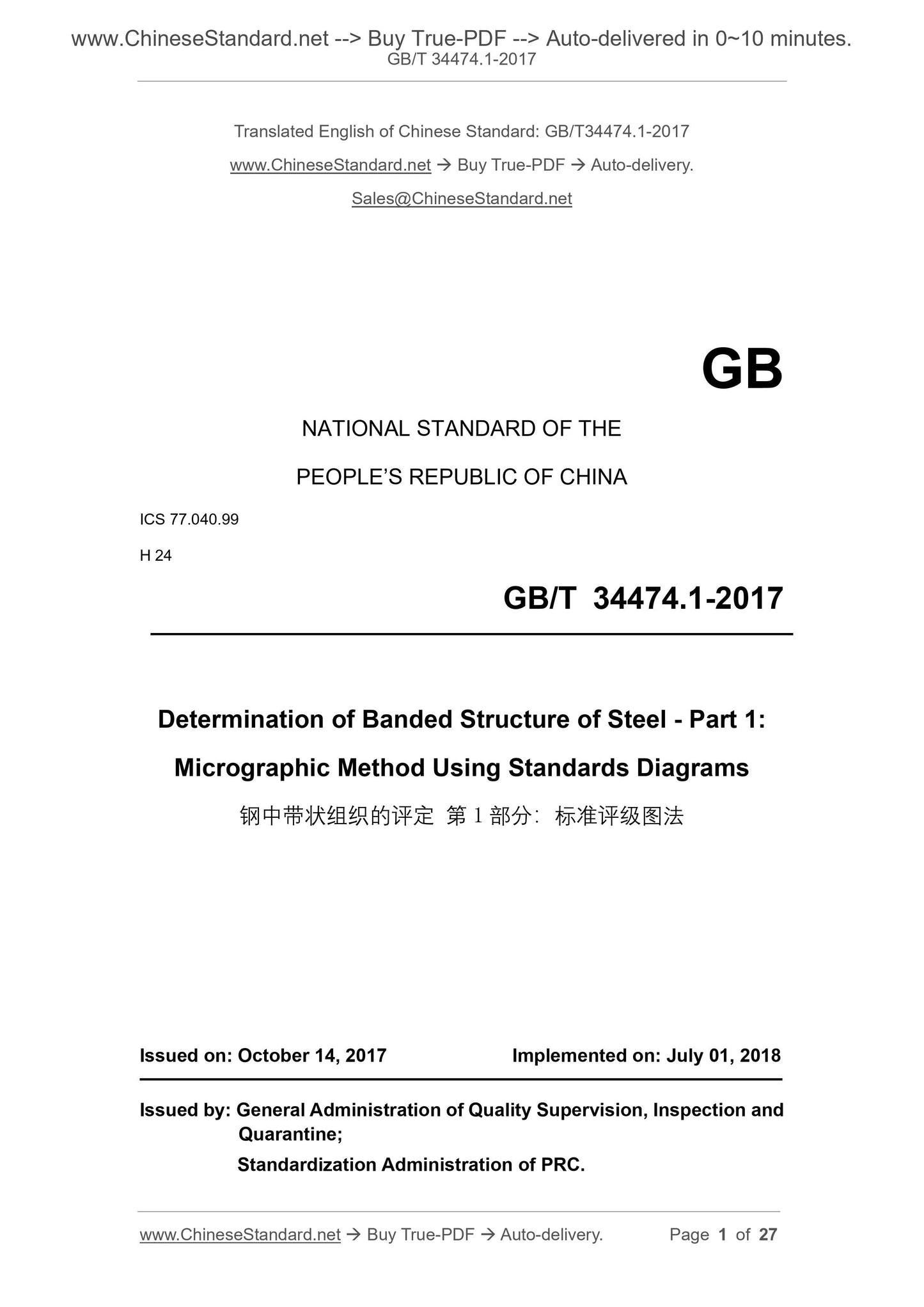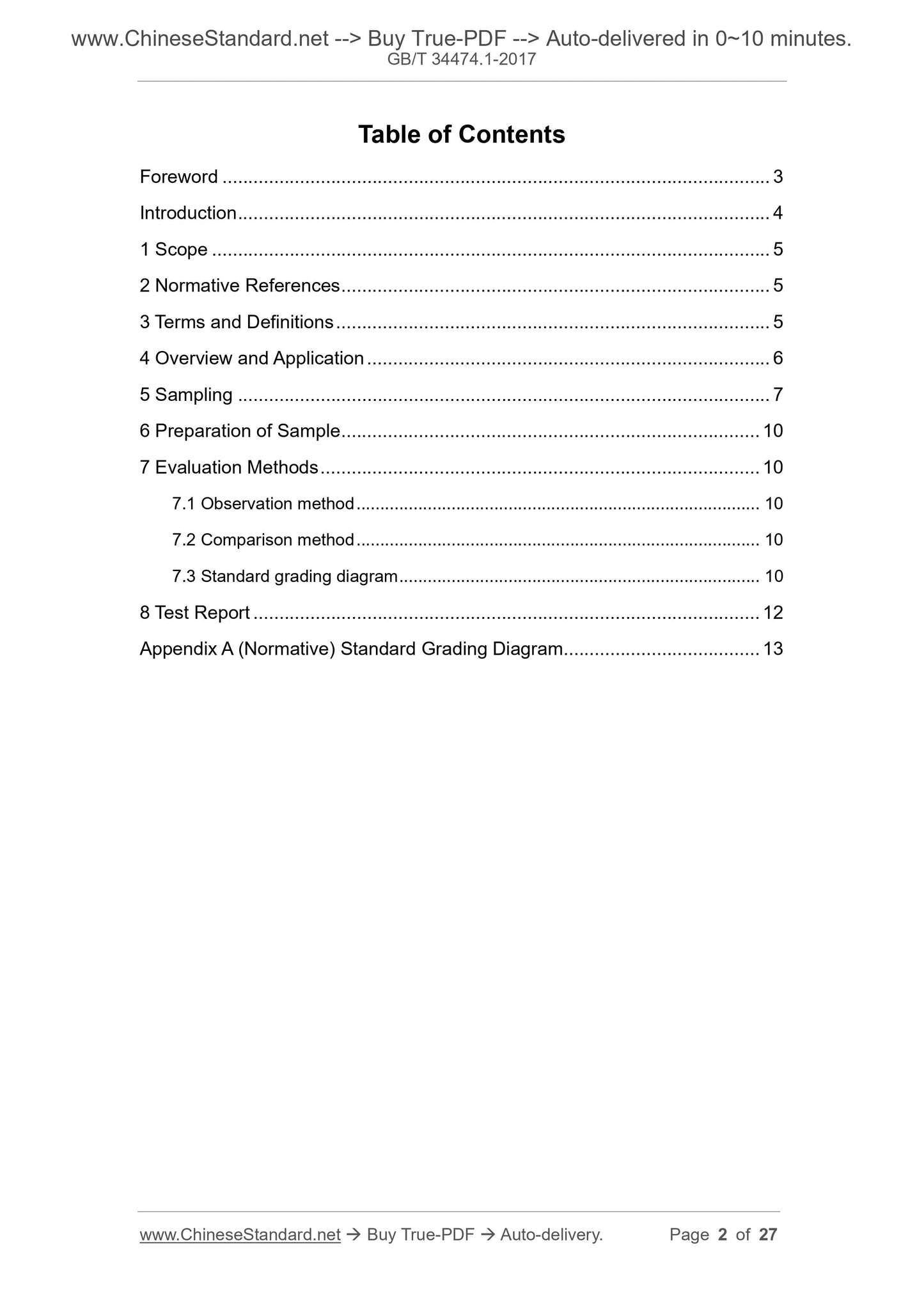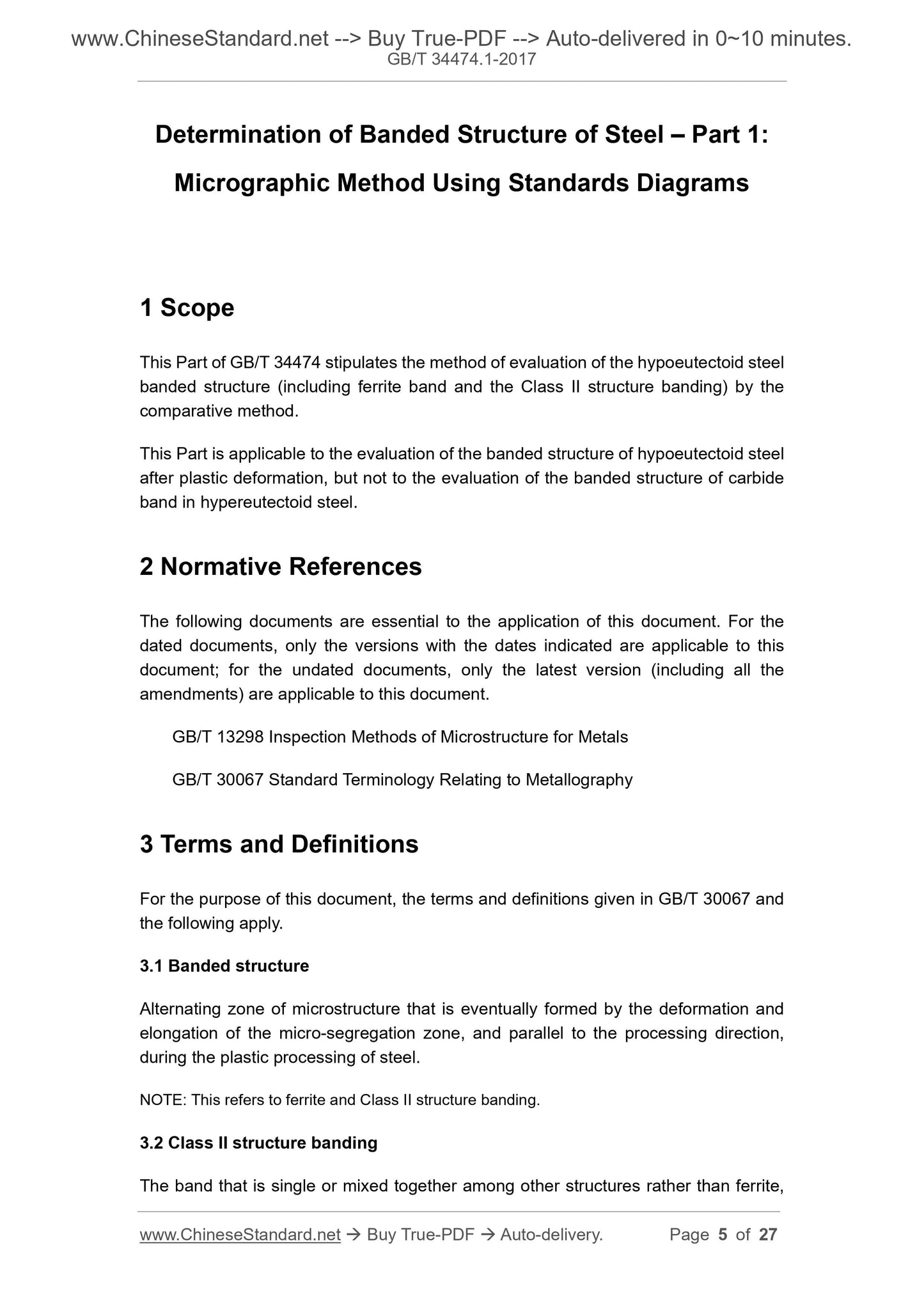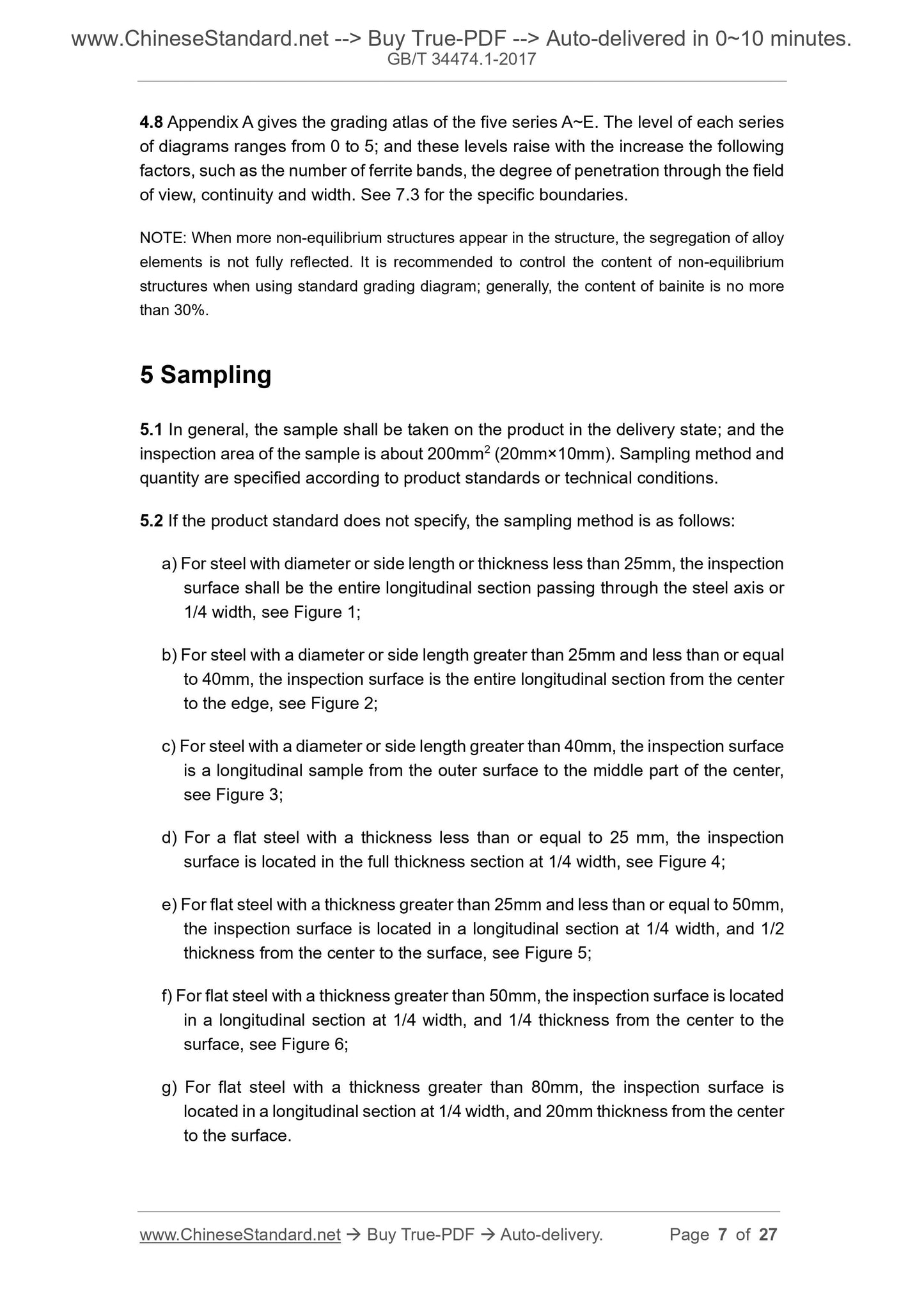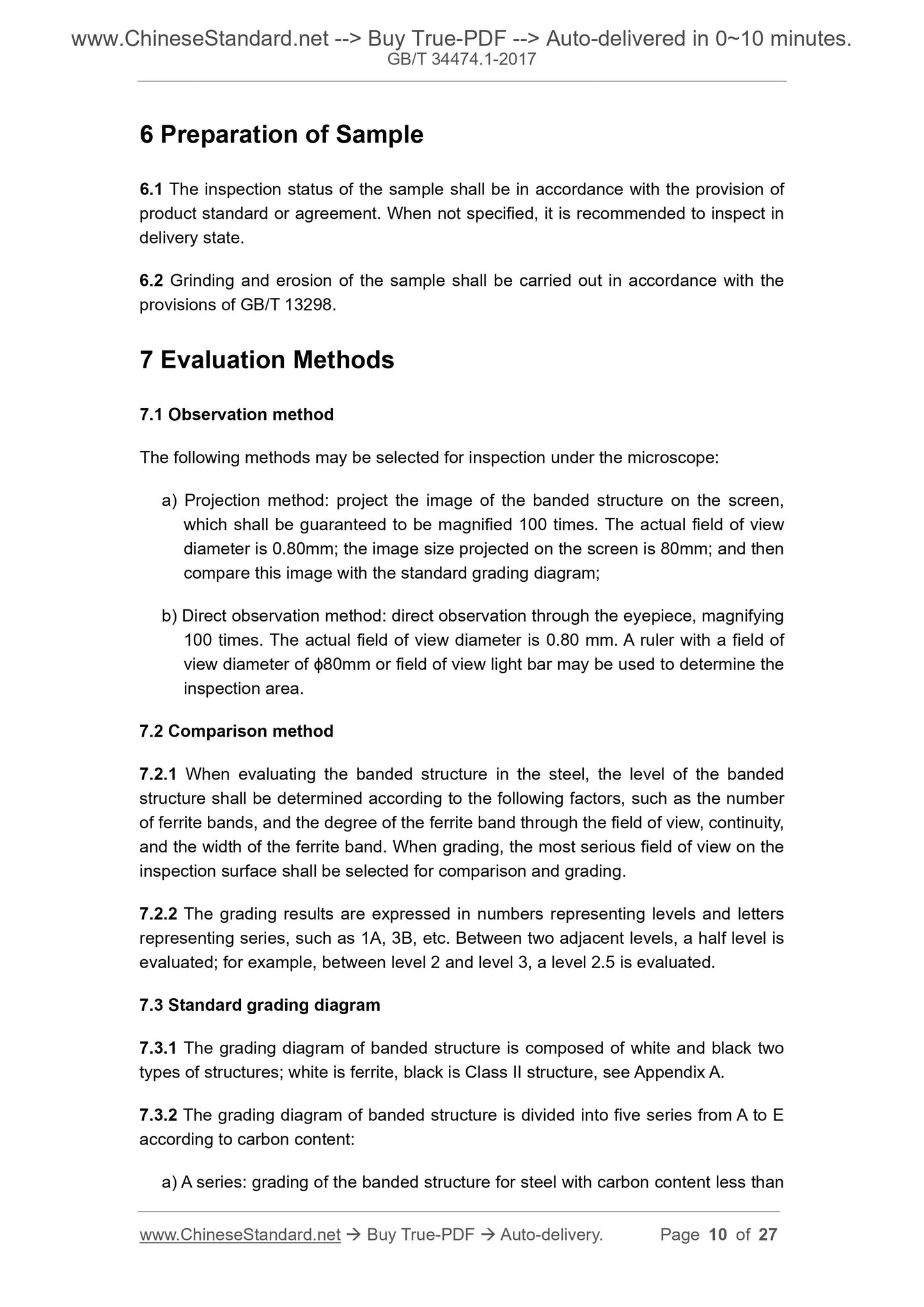1
/
of
5
www.ChineseStandard.us -- Field Test Asia Pte. Ltd.
GB/T 34474.1-2017 English PDF (GB/T34474.1-2017)
GB/T 34474.1-2017 English PDF (GB/T34474.1-2017)
Regular price
$265.00
Regular price
Sale price
$265.00
Unit price
/
per
Shipping calculated at checkout.
Couldn't load pickup availability
GB/T 34474.1-2017: Determination of Banded Structure of Steel - Part 1: Micrographic Method Using Standards Diagrams
Delivery: 9 seconds. Download (and Email) true-PDF + Invoice.Get Quotation: Click GB/T 34474.1-2017 (Self-service in 1-minute)
Newer / historical versions: GB/T 34474.1-2017
Preview True-PDF
Scope
This Part of GB/T 34474 stipulates the method of evaluation of the hypoeutectoid steelbanded structure (including ferrite band and the Class II structure banding) by the
comparative method.
This Part is applicable to the evaluation of the banded structure of hypoeutectoid steel
after plastic deformation, but not to the evaluation of the banded structure of carbide
band in hypereutectoid steel.
Basic Data
| Standard ID | GB/T 34474.1-2017 (GB/T34474.1-2017) |
| Description (Translated English) | Determination of Banded Structure of Steel - Part 1: Micrographic Method Using Standards Diagrams |
| Sector / Industry | National Standard (Recommended) |
| Classification of Chinese Standard | H24 |
| Classification of International Standard | 77.040.99 |
| Word Count Estimation | 25,268 |
| Date of Issue | 2017-10-14 |
| Date of Implementation | 2018-07-01 |
| Regulation (derived from) | National Standard Announcement 2017 No. 26 |
| Issuing agency(ies) | General Administration of Quality Supervision, Inspection and Quarantine of the People's Republic of China, Standardization Administration of the People's Republic of China |
Share
